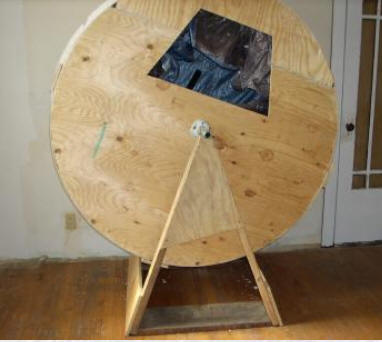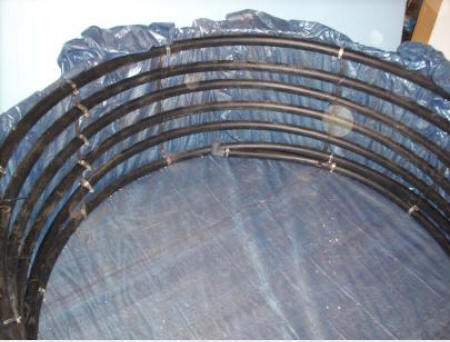
Search
The Renewable Energy site for Do-It-Yourselfers
mb-soft Biomass
(composting) Heaters
This is an interesting set of pages
that describe several schemes for using the heat generated from the
decomposition of organic material for space and/or water heating.
Basically they are refined versions of compost pile heaters.
To me, the website is poorly
organized and is awfully wordy -- it seems at times that he will never get to
the point. Its also very hard to tell from the material presented how far
he has taken these ideas into real projects. But, it does seem (to me)
like there might be something to this idea. While the site frustrating to
deal with, there is a lot of real material there if you keep at it.
If you are looking for something to
experiment with that might help your heat bills, here's your chance to be a
pioneer. If you do build one of these gadgets, please take lots of
pictures and record lots of data and send them in. If you have any
experience with one of these units I would really like to hear how it worked out
-- good or bad --
email Gary...
The site basically covers three
versions of this heater:
Version 1: The Big Bag
Introduction and Version 1 page:
http://mb-soft.com/public3/globalzk.html
Version 1 is a primitive scheme that
basically uses a tarp to wrap up a bunch of organic material. Pipes are
added to deliver air and exhaust CO2. The bag is placed in the area you
want to heat, you then add water and air, and the heat from the composting warms
the tarp outer surface delivering heat to the room. This is described as a
potentially good third world approach to heating. It might also be a
way to do some quick experiments to see how well the idea will work for you
without investing a lot of time or money.
Versions 2 and 4: The Big Bin
Versions 2 and 4 page:
http://mb-soft.com/public3/globalzm.html
Version 2 is essentially a large bin
measuring about 12 ft by 12 ft by 8 ft high, and holding around 16,000 lbs of
organic material. The bin is enclosed by a conventional building, and
heated air is extracted from the space between the outer enclosure and the
bin. The heated air is then ducted to the home for space heating.
Heat can also be extracted using pipe coils that run through the bin to pick up
heat -- this is version 4. This scheme is intended to decompose material
somewhat more slowly than version 3, and with its large capacity can supply heat
for an extended period of time -- maybe months on a single loading.
There are a few sketches and some
fairly detailed discussion of the construction. Its not clear to me
whether one of these units has actually been built.
Version 3: The Rotating Drum
Version 3 page:
http://mb-soft.com/public3/globalzl.html
Version 3 uses a rotating drum as the
composting vessel. It is fairly compact at about 60 inches in diameter by
30 inches tall. The combination of insulation on the outside, and the
mixing provided by the once per hour rotation rate results in faster
decomposition and high heat output. Heat is extracted from the vessel
using a coil of black poly pipe wrapped around the inside of the cylinder.
Heat output is said to be up to 45,000 BTU/hr -- enough to heat most homes.
This version is the only one that has
some pictures showing the construction of an actual prototype unit. The
build plans are fairly detailed and look workable to me.
|

The rotating drum version before outer insulation
is applied. Connections to supply air and to hook
up to the inside pipe coil are made near the
loading hatch later. The unit rotates 3/4 turn CW,
then 3/4 turn CCW so that pipe connections don't
get tangled up.
|

The coil of poly pipe installed on the inside of the
composting vessel.
|
As he points out, some of these
schemes might be ideal for providing heat in a greenhouse.
Again, if you have any experience
with any of these versions, or other similar compost heating schemes, I'd love
to hear about it.
More on
heating with compost
in this section...
Gary July 23, 2009


